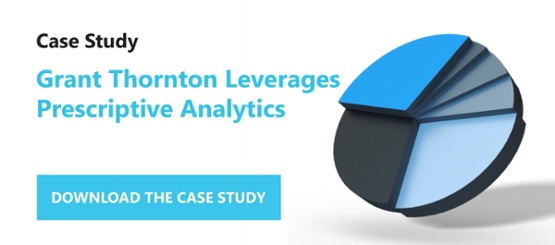Why Business Intelligence has Failed
Traditionally, BI has focused on descriptive analytics to tell the story of what happened. The reports generated from this approach are excellent at identifying scapegoats, pointing fingers, and passing blame. They are less good at identifying growth opportunities and improving the bottom line. Tools like Tableau are excellent at the former and even allow the ability to “tell stories” with the data, empowering middle management to shape the data to their liking and then present it with beautiful visuals. What has this actually achieved for the company, though?
Descriptive analytics may allow for pretty presentations, but it fails to deliver much value for businesses.
Using tools to shape past data and tell a story enables those with the ability to manipulate data an edge on getting their way within an organization. Many articles exist today that point out how easy it is to “lie with data,” and those that excel at this typically do very well using traditional BI data to make themselves look great. Does this actually improve the efficiency of a company? I’m skeptical, and the metrics surrounding the failure of BI projects tend to support that skepticism.
Moving in the Right Direction
Predictive analytics is a step above descriptive. Predictive typically takes the same data used in descriptive analytics and, using this data as a base, applies statistical modeling approaches to extrapolate from past results what future results can be expected. This is then typically used to estimate things like product demand; clearly this is a useful feature in helping businesses plan.
However, while gaining insights into future demand is certainly helpful, it is not the best we can do. In a world of finite resources, there are still complicated decisions to be made surrounding how to apply those resources. Predictive analytics can certainly point in the right direction, but forecasting alone is not enough to know the best investment opportunities in front of a company.
The Path Forward is Prescriptive
Prescriptive analytics is the way forward. Rather than building tools to describe, shape, and forecast data, organizations should be building solutions that prescribe actions based on data. This approach, if done correctly, does not give the opportunity to manipulate data for personal or departmental gain. Furthermore, it goes a step beyond simply demystifying the future.
This natural progression of BI is all about optimization. Given a company’s finite resources, how can I apply those resources to optimize my return on investment? This is the question that prescriptive analytics looks to answer, and the best solutions available today focus on stochastic optimization as a response. Stochastic optimization is able to take a real world business problem with the presence of variability and prescribe an answer that takes into account the randomness inherent in the variability.
This approach is not a simple statistical modeling exercise; it is instead a complex translation of a business model into a series of linear algebra equations, which can then be solved to deliver an optimized answer.
Closing Remarks
Optimized answers from prescriptive analytics allow companies to immediately identify key opportunities to decrease costs, increase sales and optimize their bottom line. Therefore, leveraging prescriptive analytics ensures a major competitive advantage over companies who continue to use less robust analytics for their BI.







